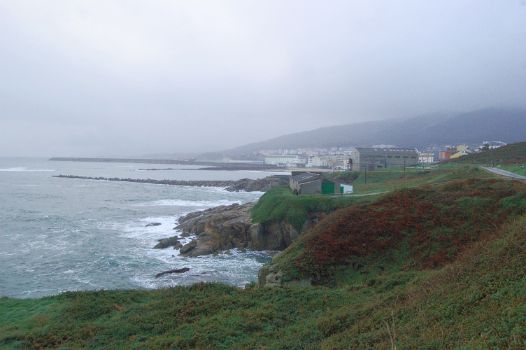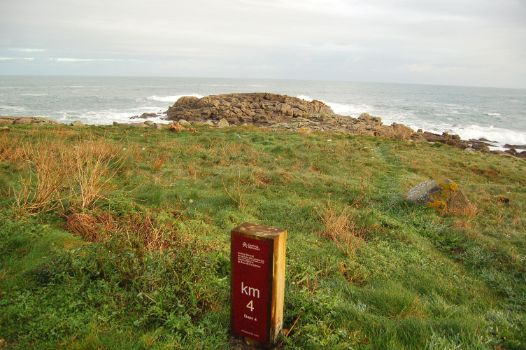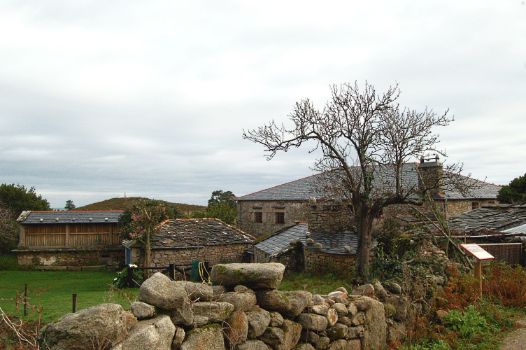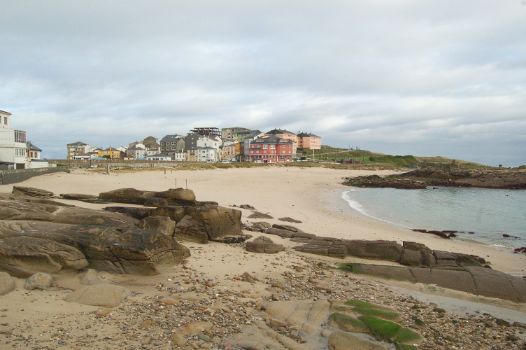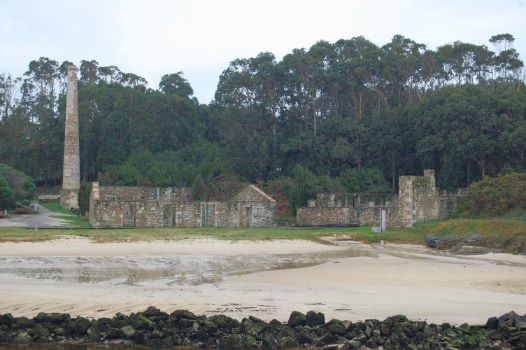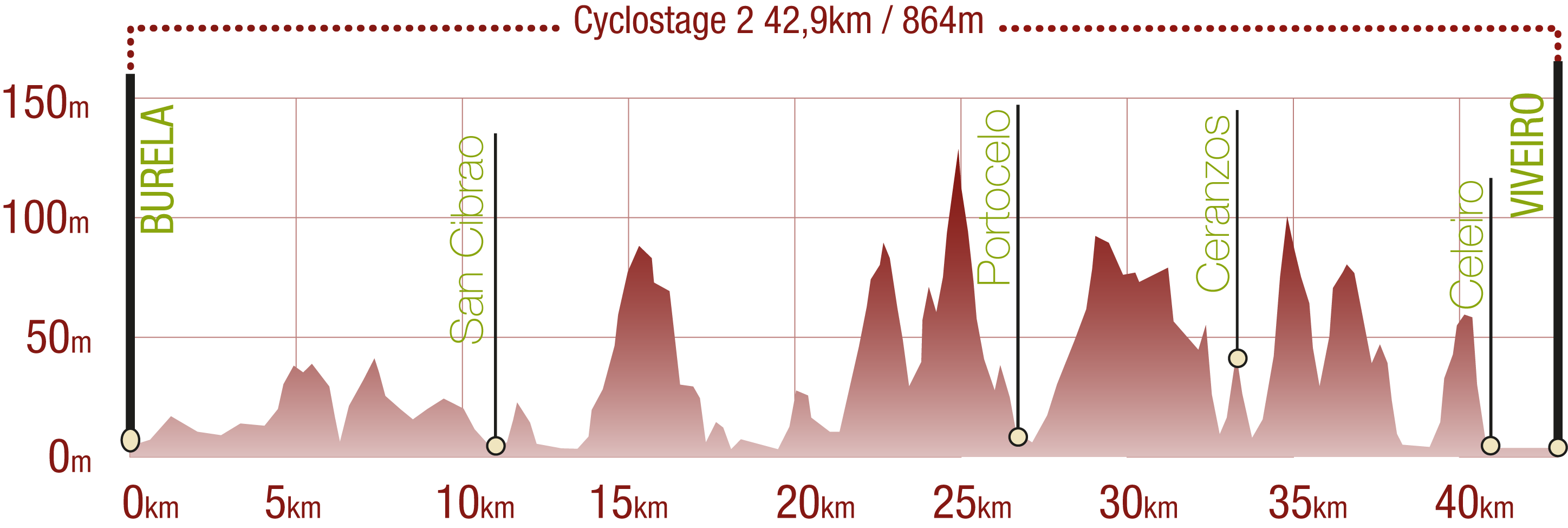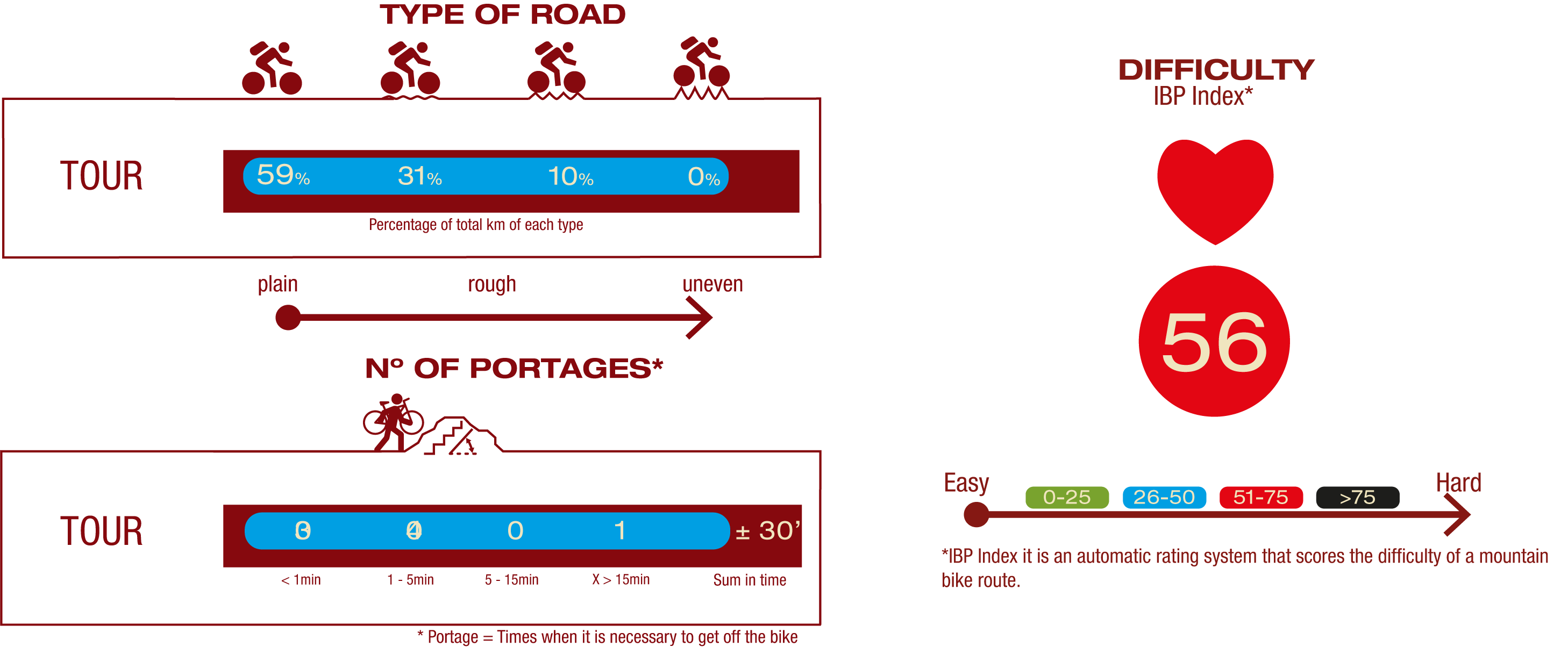Net of Natural
Trails

Stage 4. Burela - San Cibrao
Description
This stage allows the visitor to enjoy the coastal landscape between Burela and San Cibrao, and it only takes a detour to visit the Pazo de Pedrosa
In this stage, the trail leaves Burela by the O Portelo beach, allowing the traveller to enjoy the Ril beach and the A Marosa beach by walking along the seafront promenade that runs along the cliffs. After the Rueta beach, the trail leaves the coastline to admire the impressive Pazo de Pedrosa and shortly afterwards it arrives to the spectacular village of San Cibrao, where, after walking its peninsula and the Punta Atalaya lighthouse, this stage ends in front of the old fish salting factory and the Don Julián sawmill.
This fourth stage of the Cantabrian Sea Nature Trail is the shortest of the stages that run across the province of Lugo.

Our trips starts at the Burela port and continues along the seafront promenade at the O Portelo beach, leaving behind the village at the end of the beach.
This paved allows the traveller to admire spectacular views of the cliffs and islets after leaves the Burela Cape behind and reaching the small Ril beach shortly before kilometre point 2 of this stage.
The traveller circles the sport facilities at the A Marosa beach to their left, while at their right lies the A Marosa beach itself. When reaching the corner of the second football pitch, the trail turns to a dirt path, which, after running for a few metres along a pavement parallel to the LU-P-1510 road, again becomes a dirt road and runs close to the cliff line. Then, it hits kilometre 8 of this stage; at this moment, the trail allows the traveller to enjoy a wonderful view of the Pena Grande islet.
Then, the Cantabrian Sea Nature Trail runs along the pavement parallel to the LU-P-1510 for a little over a kilometre. A little over the kilometre point 5, outside the trail layout, there is a deviation to the left which leads to a detour to visit the Ancient Foundry of Sagardelos, as indicated by an information board.

Back to the trail, the traveller leaves the pavement and turns right by a wide dirt path which runs along the narrow-gauge railway tracks, to its right, and the LU-P-1510 road. After two crossroads, the trails continues again parallel to the LU-P-1510 road, leaving behind the mouth of the Xunco river, which, when discharging to the sea, forms the Rueta beach.
Leaving this beach to our right without entering it, the trail crosses the LU-P-1510 road by the pedestrian crossing, please be especially cautious. Here, a new shared section climbs along an asphalt road which ends as the Rueta houses are left behind, Then, the Nature Trails runs close to the Madeiros train stop and continues parallel to the railway tracks.

After passing kilometre point the traveller turns right, passes under the tracks and enters the San Cibrao industrial park by an asphalt road. Still on the LU-P-1510 road, and walking with the utmost care, the traveller tales the first deviation to their right, a dirt path which zigzags away from the road until reaching the Pazo de Pedrosa, an old stone manor composed of several rooms. This manor was built by an English nobleman who settled in the area fleeing the rule of Elizabeth I.
After the Pazo de Pedrosa has been left behind, the road is dotted with small laurel tree patches which lead to kilometre point 10, at which moment the traveller must open a gate to continue its route; please take care to close it again behind them. Once the pastures have been left behind, after crossing a new gate, the trail takes an asphalt road and enters the town of San Cibrao.

As soon as the traveller enters the town, they cross the LU-P-1510 road by the pedestrian crossing and takes the Rúa Bidueiros in the direction of the coastline. Once the coastline is reached, the trail continues along the seafront promenade. Kilometre point 11 is next to an old shellfish farm. Soon after, the trail reaches the Cubelas beach.
The traveller starts climbing the small slope that leads to the Punta Atalaya lighthouse, where they can rest and enjoy the breathtaking view of the coast and the two lighthouses, one of them built in 1861 with an square plant and the other taller and more modern. From Punta Atalaya, the trail descends circling this small peninsula, reaching the San Cibrao church and, soon afterwards, the San Cibrao port. The trail runs now along the opposite pavement of the Avenida da Mariña, which runs between two beaches, one at each side, before taking the Rúa Beiramar promenade, from where the old fish salting factories and the Don Julián sawmill can be seen. There, at the corresponding information board, this fourth stage of the Cantabrian Sea Nature Trail, which runs between Burela and San Cibrao, comes to an end.
Sites of interest
Puntos de interés
Culture
- Antiguas fábricas de salazón y aserradero de San Julíán
- Antigua fundición de Sargadelos
- Pazo de Pedrosa
Information
Infrastructure
Municipality
Hostel
Profile
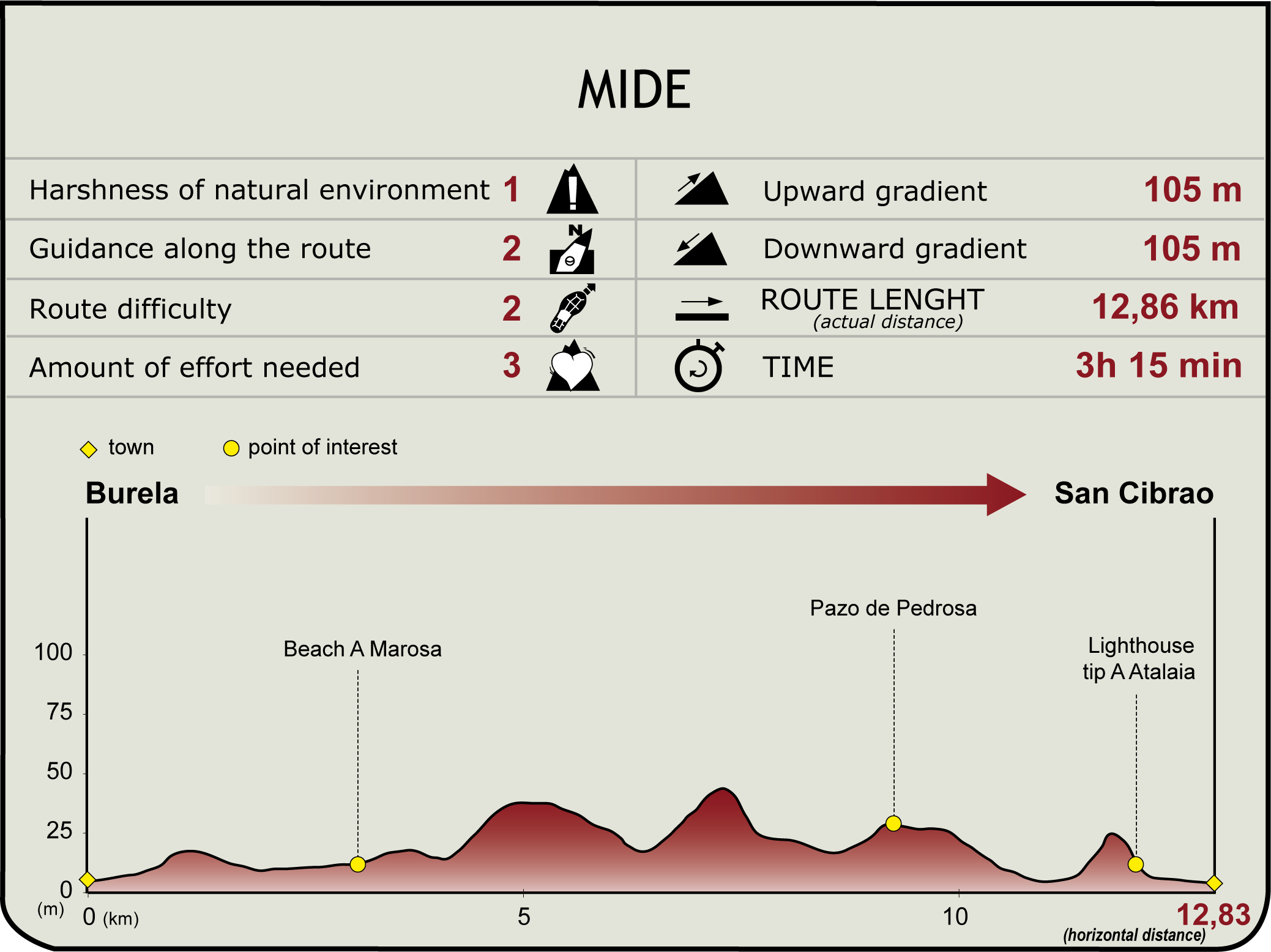
Highlights
Further information
Burela
A fishing town in the province of Lugo. Its first dwellers built the castro known as Chao de Castro, between the O Portelo beach and the Ril beach. The most valuable finding from this age is the famous golden Burela Torc which is exhibited at the Museo Provincial de Lugo. Burela belonged to the municipality of Cervo until 1994. Burela has a fishing tradition since the Middle Ages and fishing is nowadays its main economic driving force, as the demographic boom of recent years proves. The main festival honours the Virxe do Carmo (Our Lady of Mount Carmel). On this occasion, the streets leading to the port are covered with pretty carpets of flowers and the decorated fishing boats parade their Patron Saint, the Virxe do Carmo, by the sea.
San Cibrao
A village in the province of Lugo formed by two clearly separated urban areas, between which stands a sand bank which nowadays forms a pretty little peninsula into the Cantabrian Sea. San Cibrao presents a long fishing tradition, as evidenced by the presence of the Punta Atalaya lighthouse and the old fish salting factories and the Don Julián sawmill. The town holds a festival in honour of their patron saint, the Virxe do Carmo (Our Lady of Mount Carmel), and there is also a gastronomic festival linked to the village's fishing tradition, such as the Sea Urchin Festival in March and the Mussel Festival in April. Besides, there is a festival dedicated to the Maruxaina, who, according to legend, was a female creature whose lower body was that of a fish, and who blew a horn which attracted seafarers towards Os Farallóns.
Multimedia
Downloads
GPS Downloads
Documents
Cyclability
TYPE OF ROAD, PORTAGES & DIFFICULTY
SAFETY RECOMMENDATIONS
- Sections shared with hikers.
- Transit through the centre of some population centres.
GENERAL RECOMMENDATIONS
- Find out about the technical aspects of the route and the weather on the day.
- Take care of the environment. Take care not to disturb animals or damage vegetation. Respect private areas.
- You must give priority to pedestrians and comply with general traffic rules.
- The environment in which you will be riding is open, free to move around and an area where many activities are carried out (sporting, forestry, livestock and agricultural activities). Always have an understanding, prudent, responsible and respectful attitude.



